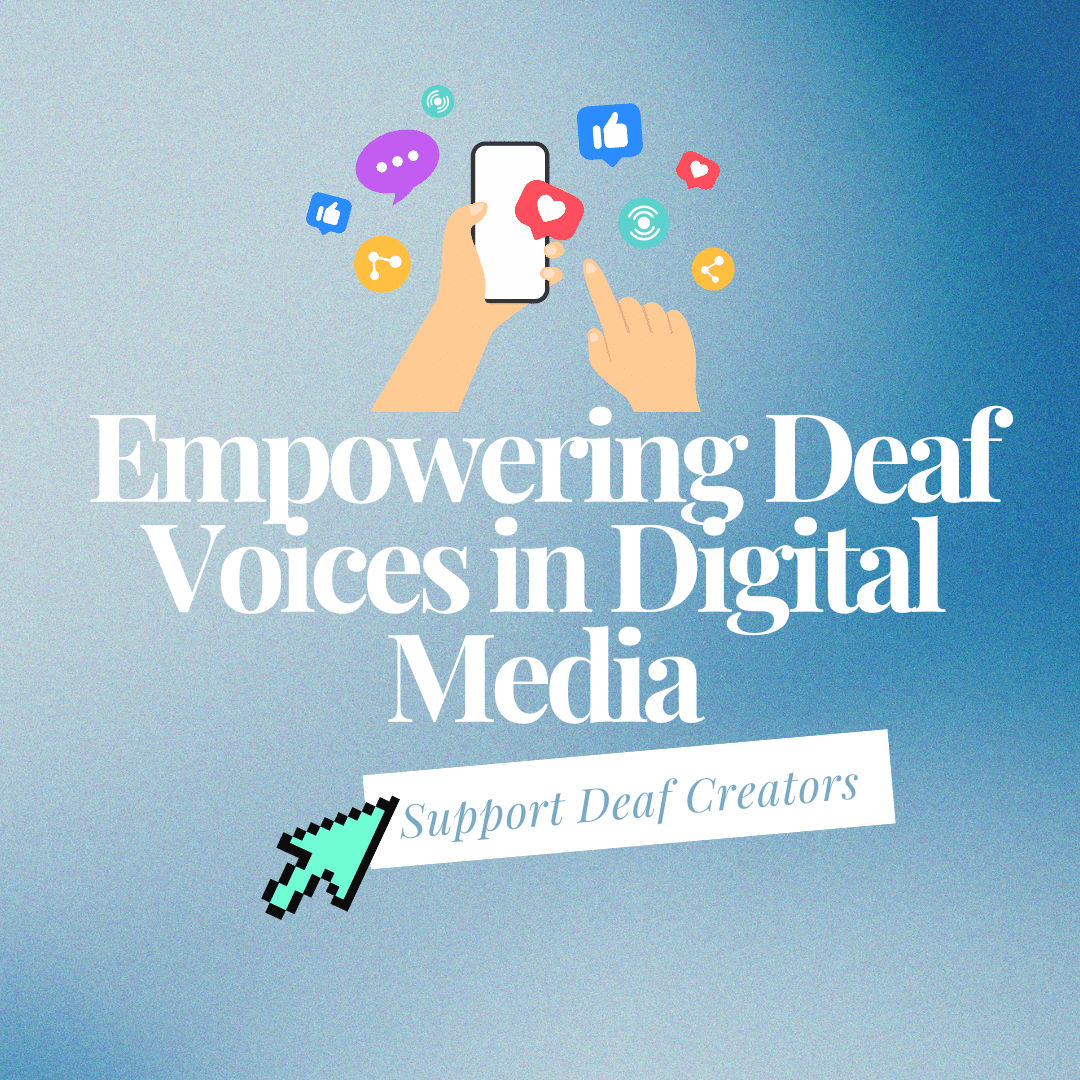
The Best Sign Language Book Recommendations
We have searched for the best sign language books, checked them out, and read their reviews. All of the best sign language books we’ve found are listed below. Fortunately, we found a whole bunch of them.
Some of these sign language books are good for use in the classroom while others are great if you are a self-learner. Some of them are also focused on certain parts of ASL (i.e. vocabulary, numbers, religious signs, etc.) So, I don’t think you’ll have a problem finding the perfect book for you.
Please note that when you choose to purchase through the external links on this website (in many but not all cases) we will receive a referral commission. However, this commission does not influence the information we provide in this site. We always give honest opinions and reviews to share our findings, beliefs, and/or experiences. You can view our full disclosure on this page.
The Best Sign Language Books
The Don’t Just “Sign”… Communicate! Student Guide Series
We highly recommend these sign language books for every ASL student. We assign readings from these books in the online classes because they not only cover all of the essential information about ASL and Deaf Culture you will need for your ASL journey, but the ASL grammar book is the only book for students completely dedicated to ASL grammar. You will be able to learn how to successfully and accurately sign in ASL right from the beginning.
Talking with Your Hands, Listening with Your Eyes: A Complete Photographic Guide to American Sign Language
This book is a wonderful resource. Not only does it have information about Deaf culture, Deaf history, famous Deaf people, hearing loss, and the Deaf community, it illustrates sign language vocabulary like no other book. If you are starting out and want to increase your ASL vocabulary, this is the book for you. It organizes the signs by category and progressively teaches you more and more signs. The pictures are the easiest to understand than any other book we have seen. We highly recommend this book!
The American Sign Language Phrase Book
The American Sign Language Phrase Book is a book that every ASL student should have on hand. We always tell ASL students to carry a phrase book with them so they can learn new phrases in their spare time. We highly recommend this book for every ASL student. And not only that, it’s also available on the Amazon Kindle!
Learn to Sign the Fun Way: Let Your Fingers Do the Talking with Games, Puzzles, and Activities in American Sign Language
This is a great book full of fun games, activities, and puzzles to help teach ASL. This is a self-study book that is mostly geared toward kids, but is great for beginning ASL students. We’d say it’s a good book for ages 14 and under. And it’s available on the Kindle!
Religious Signing: A Comprehensive Guide For All Faiths
If you want to learn religious signs, or plan to interpret church services, this book is wonderful! It’s a great comprehensive guide and is easy to understand. We highly recommend it!
American Sign Language The Easy Way
This book is very good for the self-learner, and is very accurate. If you want to learn basic ASL, this is the book for you. We recommend it!
Have You Ever Seen…? An American Sign Language Handshape DVD/Book
This book illustrates 44 handshapes in fun, bright colored illustrations with rhymes and cultural vignettes. This book truly shows what ASL and Deaf culture is all about. It is fun and great for all ages. This is a perfect introduction to ASL, and we highly recommend it.
Signing Illustrated: The Complete Learning Guide
This book is also very popular for learning ASL. The 1500 signs are organized by category, not alphabetically. You can also purchase the game called, “Sign It!” because the game uses this book for reference.
American Sign Language Dictionary, Third Edition
This is a huge book and explains more than 5,000 signs and has over 8,000 illustrations. You definitely need to have a dictionary like this if you are learning American Sign Language! When you want to look up an obscure word, it’s most likely in here!
The American Sign Language Handshape Dictionary
This is a great resource in that the dictionary is organized by handshape, not by word. This way, when you see a sign, you are able to look it up to learn what it means. We highly recommend this book for the ASL learner.
From Mime to Sign
This book shows over 1,000 photos that illustrate how gestures, mime, and facial expression can form the basis of learning ASL. We recommend this book if you are just starting out or want to brush up on your knowledge of classifiers.
Random House Webster’s American Sign Language Dictionary
This dictionary is a great resource to have. It not only illustrates vocabulary in ASL (the pictures are good, but not the best), but also idiomatic expressions. Knowing expressions like these is very important when engaging in an actual conversation with a Deaf person. We recommend this dictionary for anyone learning sign language.
Gallaudet Survival Guide to Signing
This book is great if you just want to learn some basic ASL. With only 500 words, it really does just teach you the basics. You can even give it to your friends who are interested in learning a little. We highly recommend this book as a resource for everyone.
Learning American Sign Language: Levels I & II–Beginning & Intermediate (2nd Edition) (Spiral-bound)
This book would be best used in a class with the help of an instructor. We don’t think this book would be very good for learning ASL on your own. The signing in the videos is very fast and not very good for people just beginning to learn ASL. If you know what you’re doing, though, and you want a good challenge, then maybe this book is for you.
Master ASL – Level One (with DVD)
This book covers levels 1 and 2 of ASL (they are still working on the second book), is in color, not just in black and white, and is also more modern. We have heard that it would be a good book to use for teaching a high school ASL class, so it may not be a good book for learning ASL on your own.
The Joy of Signing
This is a rather old book, so it may be outdated, but it is one of the more popular American Sign Language books. Some people still find it to be a great resource. We actually think this book teaches Signed English more than true ASL.
A Basic Course in American Sign Language (Spiral-bound)
This text is rather old, but many classrooms (particularly high school) still use it for instruction. If you want to save some money on more expensive books, you can buy this one. Don’t let the publish date push you too far away.
Signing Naturally: Level 1
Signing Naturally is the most popular ASL curriculum used in the classroom. This is level 1 of 3 and includes a workbook and video. It uses a variety of activities to teach ASL and Deaf culture through immersion. This curriculum is best used with an instructor and we wouldn’t recommend it for self-study.
Signing Naturally: Level 2
Signing Naturally is the most popular ASL curriculum used in the classroom. This is level 2 of 3 and includes a workbook and video. It uses a variety of activities to teach ASL and Deaf culture through immersion. This curriculum is best used with an instructor and we wouldn’t recommend it for self-study.
Signing Naturally: Level 3
Signing Naturally is the most popular ASL curriculum used in the classroom. This is level 3 of 3 and includes a workbook and video. It uses a variety of activities to teach ASL and Deaf culture through immersion. This curriculum is best used with an instructor and we wouldn’t recommend it for self-study.
Numbering in American Sign Language: Number Signs for Everyone
This book really makes numbers in ASL very clear. There are so many different ways to sign different numbers. It all depends on the context, and this is something you definitely need to learn how to decipher if you are learning ASL.
Do you have a favorite sign language book?
If you have a favorite sign language book that is not mentioned on this page, please share in the comments below!

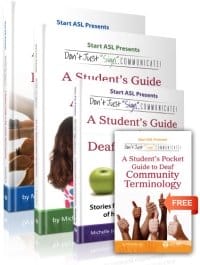


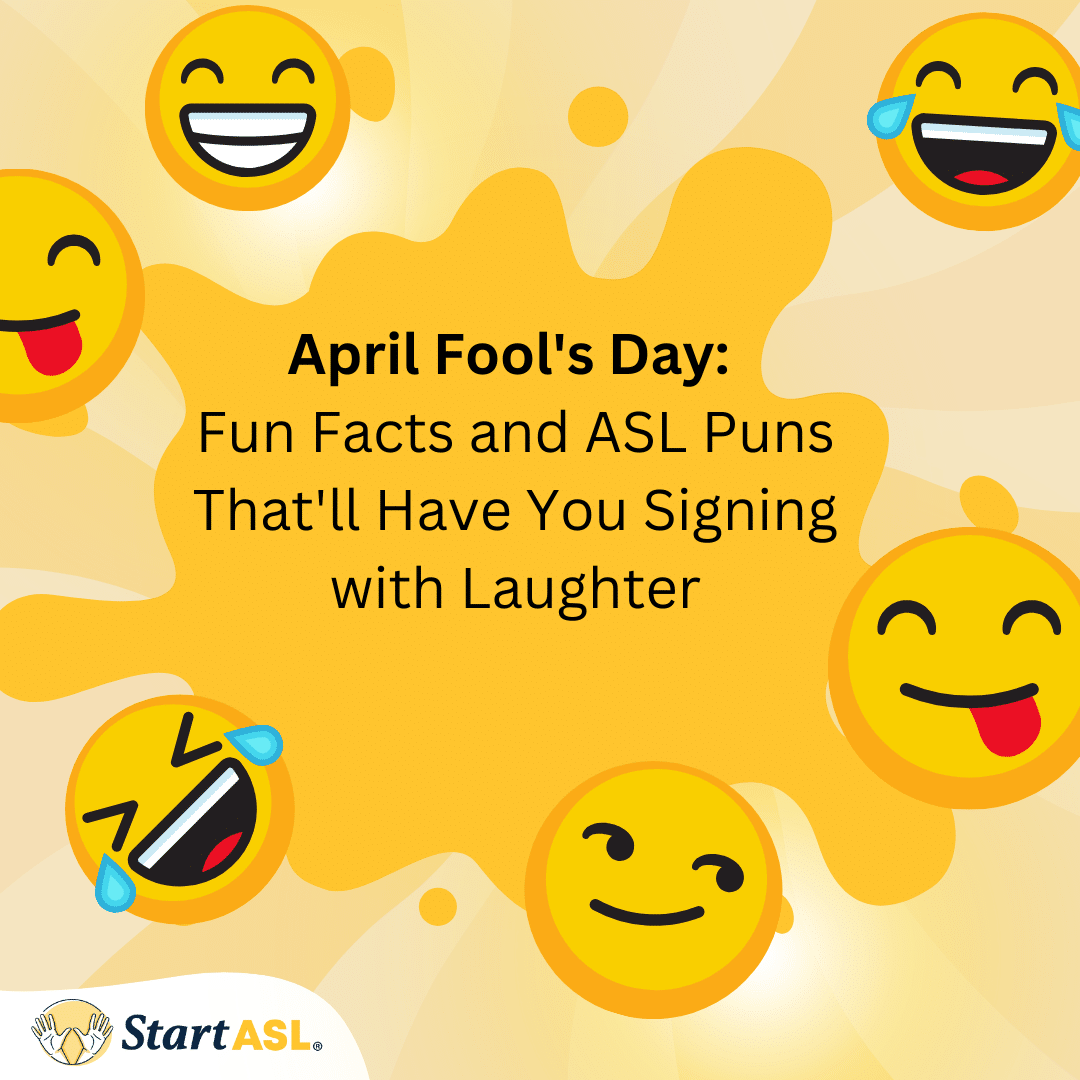
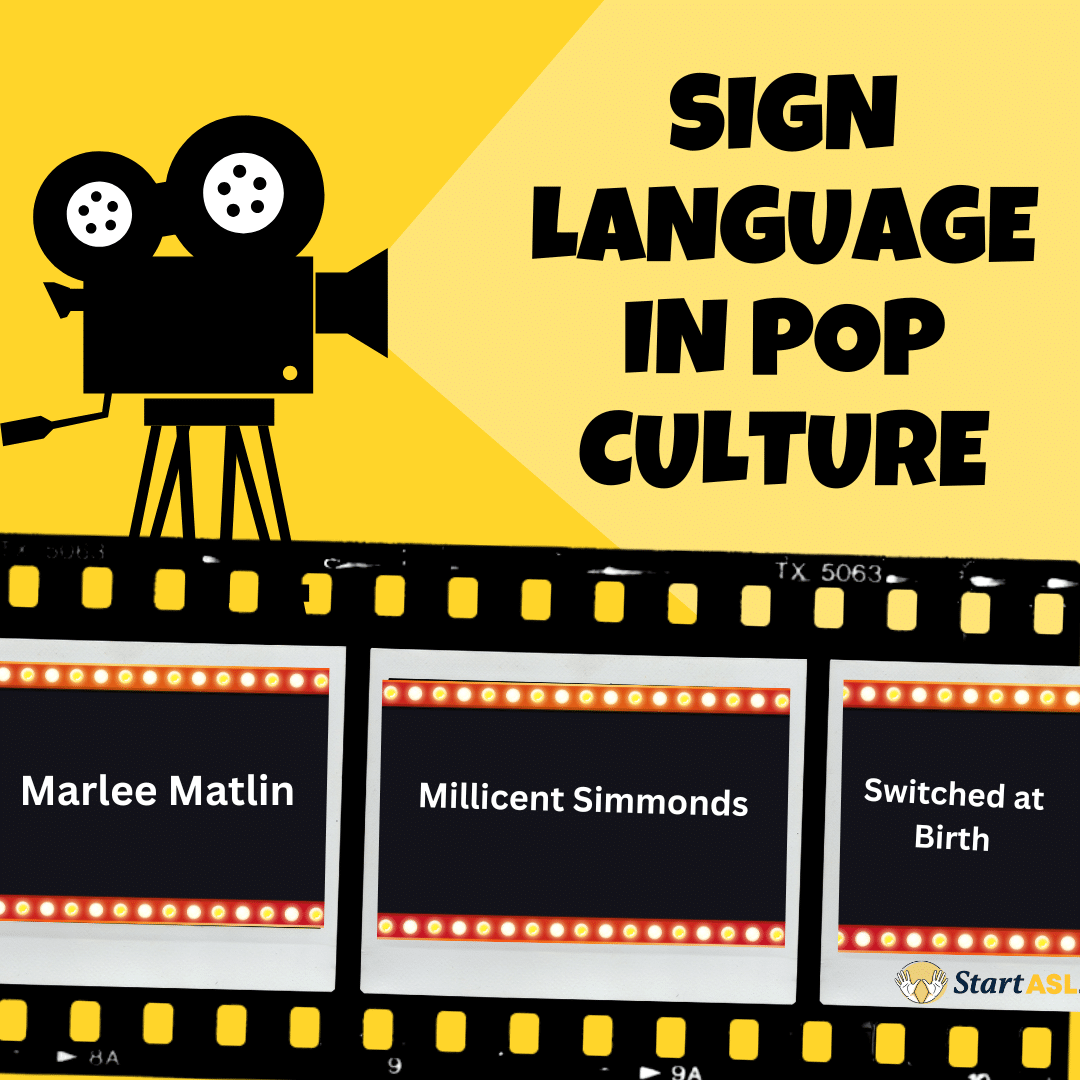
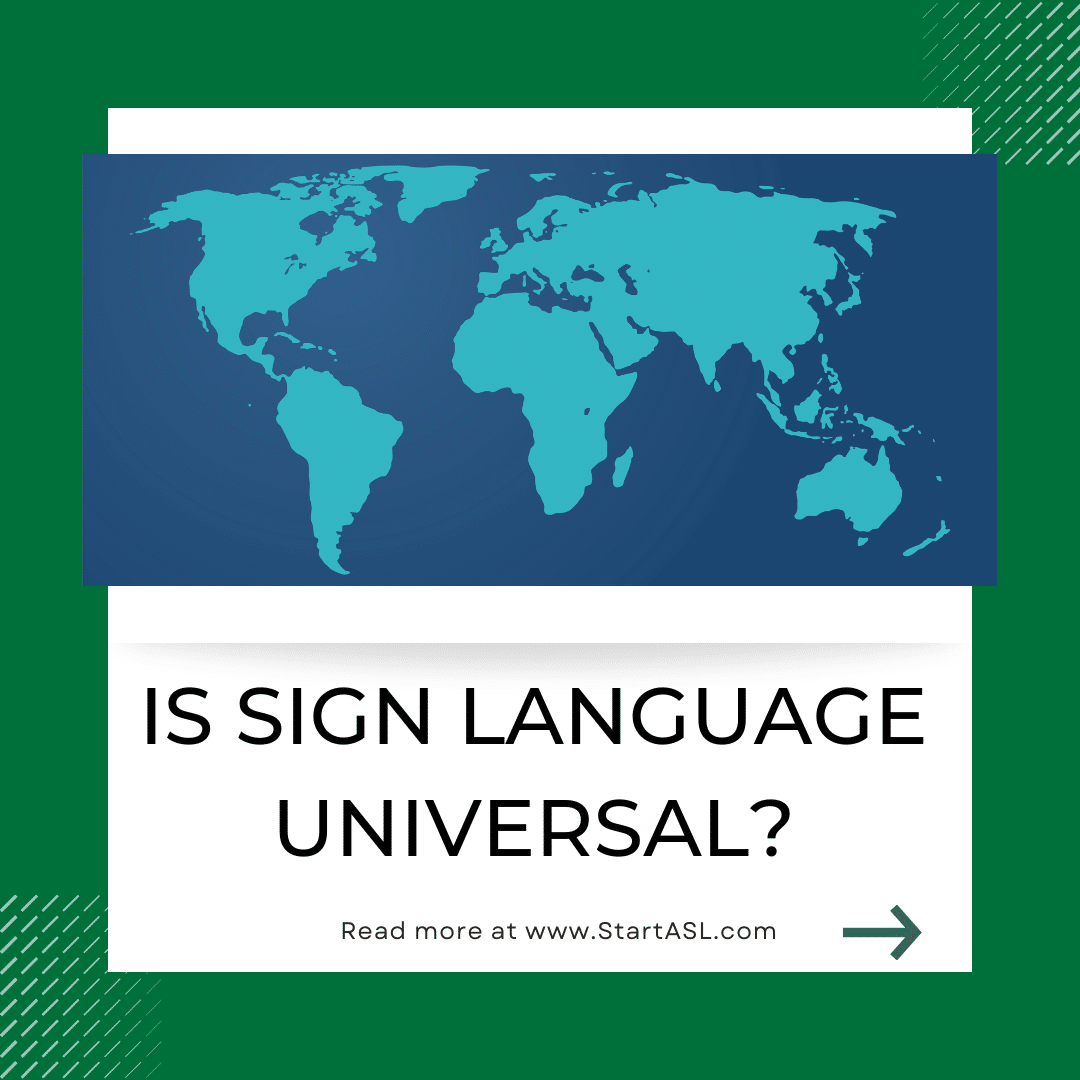





14 Responses
I want to share with you our innovative book “¡Dígalo en señas!” to teach American Sign Language to Spanish-speaking individuals.
This reference guide contains over 500 commonly used signs, as well as specialized signs that are useful in educational and medical settings. The signed images are clear, easy to understand and accompanied by a description in Spanish of how to produce the sign.
I’d like to purchase some books but it doesn’t give me a shipping cost before I put in my credit card. I don’t feel comfortable not knowing the shipping cost before I put in the card information. Can someone reach out to me and tell me the cost of shipping. Thanks so much
Hi Lena! Contact us and we will answer your question for you. You can contact us here: https://www.startasl.com/contact-us/
Here are two great reviews of Talking With Your Hands Listening With Your Eyes:
from Kristin McGinnis (California): I added this to my materials for my ASL 1/2 class. The book itself is set up in logical chapters with short articles interwoven throughout. What I really like is that they not only have the “master” word, but other words that have the same meaning, which cuts down a bit on my trying to think of every sign that may be available. Also, it has games that are applicable for multiple grade levels. Good addition!
from Rebecca Wenger (Pennsylvania): Do you need help in your American Sign Language skills? You’ll find it here. Of any of the ASL products that I’ve used, this one continues to be the first that I reach for when studying. Its vast collection includes a complete guide to American Sign Language. You’ll find many articles ranging from topics of the Deaf culture, Deaf individuals, ASL references and more. These articles are intertwined with a complete ASL dictionary which covers nearly everything a beginner, intermediate, or even advanced signer may need. The introduction also includes the History of Sign Language. Further helpful information regarding the Deaf community and telecommunications will be found there as well. A chapter titled “The Basics” will provide you with just that: the basics to this special language. Find answers to all those unasked questions! What is sign language? What’s the importance of finger spelling? What is Pidgin Signed English? What are name signs? These and more will be answered in a way that you will understand. On top of all this, is a complete dictionary of signs covering an abundance of topics such as conversations, actions, home and clothing, mealtime and food, numbers, math terms, quantity and money, and much, much more. Each sign is accompanied by a clear black and white picture, as well as descriptions on the hand shape, position, and movement. Helpful tips aid your visualization and remembrance of the sign. This book is a valuable tool and resource that I highly recommend.
Here is a great review of Signing: How To Speak with Your Hands by Elaine Costello:
from Rebecca Wenger (Pennsylvania): To those learning American Sign Language, it can never hurt to have several ASL dictionaries. In doing so, you can confirm signs, examine different forms of a sign, and recognize the slight tweaks that different states may place on a sign. This dictionary is one that you should defiantly consider adding to your collection. The author, Dr. Elaine Costello, has been both an educator and author involved in the world of Deafness for well over thirty years. She knows what she is talking about. She dedicates a full chapter to the introduction of ASL, including background information on Deafness, answers to the term Sign Language, and advice on learning to sign. She also has a page with selected and recommended readings to further your knowledge of ASL and the deaf culture. And of course, the dictionary itself. Each picture resembles a clearly drawn individual performing the sign. Beneath the picture and title of the sign is a written description. Most of the signs not all, but a large majority include a hint that helps you to visualize the sign even better. Elaine Costello’s ASL dictionary holds a large collection of signs that include People, Foods and Eating, Descriptions, Time, Days, Seasons, Places, Health and Survival and much, much more. A highly recommended book. It was the very first ASL dictionary that I ever owned.
I only use my phone to learn do not know computer
Here are two great reviews of A Basic Course in American Sign Language:
from Amber Waite (Utah): This book was recommended as the manual for my American Sign Language class at the School for the Deaf in St. George Utah. I really appreciate the vocabulary of the book, but even more I feel that the grammatical guide has been the most helpful in guiding me as I try to switch from English to American Sign Language grammatical form. Each of the vocabulary is show by illustration of models performing the sign. The facial expressions are illustrated and very helpful in identifying how to correctly convey the sign in true ASL form. There is sufficient practice pages that ask you to sign an English sentence in ASL and often they will give you the ASL translation to help the transition between the languages. Very effective for practicing.
from Brenda Dawe: I love this text… seems we are in the minority according to the other list groups to which I belong. But I’ve used it for 41 semesters on the college level and it has not lost it’s glitter with me yet. Students like the very short chapters (usually 3-4 pages for the grammar and concepts and another 3 or so for the vocabulary. They are slow to find the glossing of the practice sentences in the back of the book which to me is a great stress reliever. I keep buying new texts as they are produced, yet continue to judge the ABC/ASL so far better than anything else I’ve seen. Old is not always BAD…especially when it is BASIC instruction for beginners.
Here is a great review of Signing Illustrated:
from Debra Stephens (Quebec, Canada): I really like this booklet it is small, 4 x 9 inches and 25 pages long. It offers over 200 signs and is not very large to take along with me in the car or on the bus. Its’ mission is communication. It offers easy to learn illustrated signs of everyday words. It begins with the alphabet which is essential for communicating words which cannot be signed by illustration. Learning the alphabet first enables one to spell out the word to the deaf person that otherwise may be very difficult to illustrate. This book covers numbers, colours, family members, days of the week, and some objects, along with sign illustrations. It is not a complete language tool however it is an introduction to COMMUNICATE for a beginner who desires to learn. This booklet in its’ simplicity encourages family and friends of the deaf to communicate in this expressive, graceful language.
Here is a great review of The American Sign Language Phrase Book:
from Roberta Cooke (Pennsylvania): I have just begun learning American Sign Language but I have found that The American Sign Language Phrase Book by Lou Fant and illustrated by Betty G. Miller (published by Contemporary Books), to be a fun and useful book. The book includes chapters such as: Everyday Expressions, Signing and Deafness, Getting Acquainted, Health, Travel, Family, Colors, Numbers, Date and Money, just to name a few of the 17 chapters (in my book). I have an older copy but the newer books also contain a chapter on Technology. Personally, I like hard copy books because I can use them when I am not at a computer. This is a book that I have carried around wherever I gone. I find the illustrations easy to understand and the phrases illustrated to be ones used in common everyday communications. It is important to read the beginning section of the book that describes the symbols used in the illustrations such as which part of the illustration is the beginning or end of the sign. I have also found the index to be complete and very useful. If I forget a single word I may reference it in the index and will be able to find the page which contains that particular word in a phrase. This is a book that I recommend at least for beginners as myself.
I have “Signing Naturally Unit 1-6” and “Signing Naturally 7-12,” I’m looking for “Signing Naturally Unit 13- ” do you know where I can get it, or its equivalent, or if it’s under a different title?
Hi Nicholas, I don’t believe there are more than 12 units in Signing Naturally 1. You would probably move on to Signing Naturally 2 at this point. :)
Signing Naturally unit 13-17 are in Signing Naturally Level 2 and 19-25 are in Signing Naturally Level 3 (Dawn Sign Press)
Could you recommend a sign language theasaurus?
No problem! I’ve just added a thesaurus to our ASL Dictionary Recommendations Page: https://www.startasl.com/sign-language-dictionary